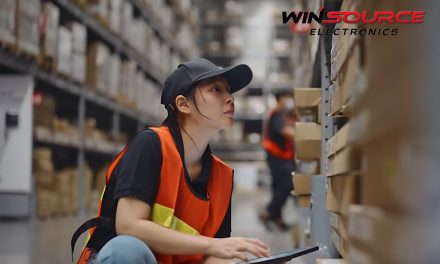Packaging Innovation – Trends to Understand for Acceleration
Successful innovation is difficult, expensive, and risky! Over the last decade multiple published studies across the globe report innovation failure rates in the 75-80% range.
Failure means these new products are not returning the required significant investment made or sustaining their planned revenue expectations. The reasons include:
- Market research is skewed by the wrong questions or rendered useless by failure to view results objectively
- Poor market pricing – too high to warrant purchase, too low to be considered of value
- Lack of market demand in an undefined category
- The product revolutionizes a new category and requires substantial consumer benefit education—but doesn’t get it and therefore ignores
- Lateness – competition have already launched with a market accepted solution
In a world where people are constantly on the go, a product’s performance, convenience, and sustainability are table stakes for leading brands. This is the instant gratification generation and now is the time for market leaders to take innovative steps to better serve their customers and win in the face of powerful competition – on the shelf, online, and in the home.
The Role of Packaging in Successful Consumer Goods Innovation
Gone are the days when packaging was just a means of protecting and identifying a product. The role of packaging in a successful consumer product must perform these basic functions, but the impact of packaging is increasingly far greater.
Good packaging innovation influences and reinforces:
- Price – through its perceived value, actual cost, material choice, supply chain length, and complexity
- Performance – through its design, ease of use, content accessibility, and ability to educate the purchaser/user
- Convenience – through its on-time/demand delivery of connecting the product to the purchaser/user
- Brand Values – through features such as sustainable material choices
- Brand Position – through its design relevance and how the physical package matches brand position and essence
- Differentiation – through how the package design stands out versus others in its category and connects with the purchaser/user, who in turn are increasingly sharing their views and experiences in a connected world.
 Innovative product packaging increases the chances of new consumer goods products succeeding and can extend the product lifecycle of existing products. To be successful at packaging innovation, it is imperative that the latest consumer trends that follow are understood and incorporated into the latest design thinking:
Innovative product packaging increases the chances of new consumer goods products succeeding and can extend the product lifecycle of existing products. To be successful at packaging innovation, it is imperative that the latest consumer trends that follow are understood and incorporated into the latest design thinking:
Global Urbanization – Across the world, the populations of major cities are expanding. This exponential growth is driving up the cost of both living and business space.
Implications – packages become smaller due to lack of storage. Single serve packaging increases. There is more frequent restocking of goods in home. Out-of-home consumption of goods increases. This latter trend drives the need for convenience and “on-the-go” products and services. With increasingly busy and on-the-go lifestyles, consumers expect more from and easier access to products, preferring those that seamlessly integrate into – and enhance – their lives.
 Experience Seeking – Increasingly consumers are not just buying a discrete product. They are also buying experiences and access to a brand’s community. This is not only something consumers need but something they value to help them determine who they are and how they define themselves.
Experience Seeking – Increasingly consumers are not just buying a discrete product. They are also buying experiences and access to a brand’s community. This is not only something consumers need but something they value to help them determine who they are and how they define themselves.
Implications – the role of packaging in augmenting the values and experience with a brand is increasing in importance.
Mass Customization – Consumers today have evolved to want what they want when they want “it” and exactly how they want to receive and experience “it”. Firms must respond in more creative ways to this need of mass customization, which in theory can increase product complexity and costs. This calls for innovative products, packaging, and agile supply chains.
Implications – low volume production, user designed added-value features, responsive packaging that can respond/act given certain condition – e.g. printing ink that helps tell you if your beer is cold enough.
Online Fulfillment – Consumers needing the ability to get what they want, when they want it means distribution models are changing. The ability to have goods delivered directly to individuals can mean bypassing the traditional brick and mortar model. As online fulfillment has become more pervasive in our lives across industry verticals, it has presented more consumer needs, more opportunities, and different challenges for brands and suppliers. The steps consumers are taking before (and after) a purchase is changing. More time is being spent researching available options online before setting foot inside a retail store. Voice-recognition technology is advancing and becoming a staple in households.
 Implications – The ordering of goods is becoming easier. Package designs need to be optimized for shipment. The out-of-box experience and return process needs to be carefully considered to avoid damage to the brand. The online presence of a brand needs to be optimized and differentiated, as does the complete omni-channel consumer experience.
Implications – The ordering of goods is becoming easier. Package designs need to be optimized for shipment. The out-of-box experience and return process needs to be carefully considered to avoid damage to the brand. The online presence of a brand needs to be optimized and differentiated, as does the complete omni-channel consumer experience.
Emerging Middle Class – In markets around the world, consumers are climbing the economic ladder and they’re bringing new levels of disposable income and spending habits. This trend brings opportunities for brands that have the strength to compete with traditional local brands. It also brings challenges such as brand protection, security, and safety.
Implications – packages need to help secure and authenticate products for consumers to trust them.
 Alternative Channels – Consumers are embracing shopping outside of the traditional retail store model where a brand competes for shelf space and visibility – the “moment of truth” of catching the eye and dollars of a passing consumer. Pop-up stores as well as online and mobile apps are just a few of the channels making headlines by mixing tangible and digital experiences.
Alternative Channels – Consumers are embracing shopping outside of the traditional retail store model where a brand competes for shelf space and visibility – the “moment of truth” of catching the eye and dollars of a passing consumer. Pop-up stores as well as online and mobile apps are just a few of the channels making headlines by mixing tangible and digital experiences.
Implications – These new ways of selling represent new “first moments of truth,” as well as out-of-the-box opportunities for differentiation and rapid trial product launches for quick market testing.
Environmental Consciousness – Sustainability: It is no longer just a trend or a wish-list item. Sustainability has become an absolute necessity for consumers. In fact, multiple research studies show how consumers are more likely to buy a product if the company is trying to be sustainable. At the extreme, the actual need for packaging is challenged.
Implications – New natural and organic products and packaging materials, reduced packaging, reduced supply chain footprint, and streamlined waste recovery. Packaging needs to go far beyond protecting and identifying goods in a sustainable way. Its existence needs to be augmented by adding value to the experience of the product and brand.
Digitalization & Connectivity – The advancement of sensor and connected technologies with the overall miniaturization of electronics presents further opportunities to create new products, brand experiences, and deliver more value. Computers and smartphones have become key features of day-to-day life and activities. Digitization provides consumers the opportunity to manage digitally-integrated products at their fingertips with ease.
Implications – Packaging is increasingly becoming more of a device which performs functions such as being a delivery mechanism, ensures compliance, is smart and connected to the internet, as well as collect and transmit data, such as current and future predictions of consumers’ buying habits.
 More than ever, market leaders are embracing packaging innovation to drive competitive differentiation, increase revenue, lower costs, speed up time-to-market, and connect with customers in new and compelling ways. The ability to align brands more closely and consistently with consumer lifestyles, smart devices, and the internet is transforming how customers choose and interact with consumer devices, CPG, consumer healthcare products, as well as food and beverages.
More than ever, market leaders are embracing packaging innovation to drive competitive differentiation, increase revenue, lower costs, speed up time-to-market, and connect with customers in new and compelling ways. The ability to align brands more closely and consistently with consumer lifestyles, smart devices, and the internet is transforming how customers choose and interact with consumer devices, CPG, consumer healthcare products, as well as food and beverages.
Did you know that the combined power of Radius and Jabil can show you results in as little as just 4 weeks? Together, we represent the only vertically-integrated solution with both design and mold capabilities under one roof! Our Packaging Sprint offers CPG customers the ability to work with one partner, to answer the most critical questions that determine financial viability, technical feasibility, and desirability of an innovative packaging idea. With accuracy, speed, and reduced risk, we enable you to beat your competition at delivering compelling brand and product experiences to drive your business growth.
Want to hear more? Check out these on-demand webinars where we speak more in depth about these topics – Packaging of the Future: Part 1, Part 2, and Part 3
Or better yet, contact us to learn how you can do this with accuracy, speed, and reduced risk!












